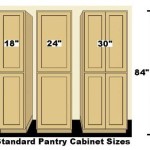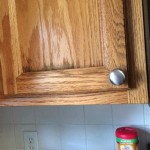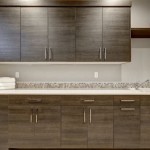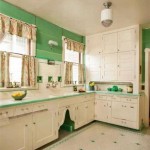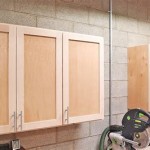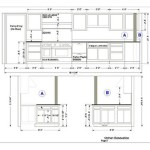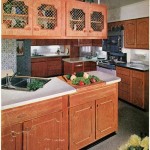Contrasting Kitchen Cabinets and Island: Design Principles and Practical Considerations
The kitchen, often considered the heart of the home, benefits significantly from thoughtful design choices, and the selection and arrangement of cabinets and the kitchen island play a crucial role in both functionality and aesthetics. Adopting a contrasting approach to cabinets and the island can elevate the visual appeal of the kitchen, create depth, and highlight specific areas. This article explores the principles and practical considerations for effectively implementing contrasting kitchen cabinets and islands.
A contrasting design scheme involves intentionally using different colors, materials, or styles for the main kitchen cabinets and the island. This departure from a uniform look can introduce visual interest, define zones within the kitchen, and create a focal point. The effectiveness of this approach relies on a solid understanding of color theory, material compatibility, and spatial awareness.
Understanding Color Theory for Cabinet and Island Contrast
Color theory provides a framework for understanding how colors interact and influence perception. When planning a contrasting kitchen design, it is imperative to consider the relationships between the colors chosen for the cabinets and the island. Complementary colors, which sit opposite each other on the color wheel (e.g., blue and orange, red and green, yellow and purple), can create a vibrant and dynamic contrast. However, using complementary colors requires careful balance to avoid visual overwhelm. A general rule of thumb is to use one color as a dominant hue and the other as an accent.
Analogous colors, which are adjacent to each other on the color wheel (e.g., blue, blue-green, and green), offer a more subtle and harmonious contrast. This approach is suitable for those seeking a sophisticated and calming kitchen atmosphere. The difference in saturation or value (lightness or darkness) can further enhance the contrast between analogous colors.
Monochromatic schemes, using different shades and tints of a single color, provide a sophisticated and unified look. While technically not a "contrast" in the strict sense, varying the tones within a monochromatic palette can create visual interest and depth. For instance, using a dark gray for the island cabinets and a lighter gray for the perimeter cabinets can create a subtle yet effective differentiation.
Neutral color palettes are exceptionally versatile and provide a blank canvas for introducing contrast through texture and material. Combining white or cream cabinets with a dark wood island, or vice versa, creates a classic and timeless appeal. Neutrals also allow for the incorporation of bolder accent colors in accessories and decorative elements without clashing.
Beyond the color wheel, understanding the psychological effects of color is equally important. Warm colors like red, orange, and yellow can create a sense of energy and excitement, while cool colors like blue, green, and purple tend to evoke calmness and serenity. The color selection should align with the desired mood and atmosphere of the kitchen.
Material Selection and Textural Considerations
The material used for the cabinets and island contributes significantly to the overall aesthetic and durability of the kitchen. Contrasting materials can create a visually striking effect and add tactile interest to the space. Common cabinet materials include wood (various species like oak, maple, cherry, and walnut), laminate, thermofoil, and painted MDF (medium-density fiberboard). Island options often include the same materials, but also incorporate alternatives like concrete, metal, or butcher block for the countertop or cabinet base.
Wood offers warmth, character, and natural beauty. Different wood species have distinct grain patterns and colors, allowing for a wide range of design possibilities. Pairing painted cabinets with a natural wood island highlights the inherent beauty of the wood and creates a pleasing contrast. For example, crisp white cabinets paired with a walnut island can bring both modern and rustic elements to the kitchen.
Laminate and thermofoil are cost-effective options that offer a wide variety of colors and patterns. These materials are durable and easy to clean, making them ideal for busy kitchens. Consider contrasting a solid-color laminate cabinet with a textured laminate island to introduce visual depth.
Concrete, metal, and butcher block offer unique textural and visual elements. Concrete creates a modern and industrial aesthetic, while metal adds a sleek and contemporary touch. Butcher block provides warmth and a natural feel. Combining these materials with more traditional cabinet options can create a dynamic and eclectic kitchen design.
The finish of the cabinets and island also plays a role in achieving a cohesive look. A matte finish absorbs light and creates a soft, understated look, while a glossy finish reflects light and adds a touch of glamour. Contrasting the finish – for instance, pairing matte cabinets with a glossy island – can enhance the visual impact.
The choice of hardware (knobs, pulls, and handles) further contributes to the overall design. Using different hardware styles or finishes on the cabinets and island can accentuate the contrasting elements. For instance, brushed nickel hardware on the cabinets and matte black hardware on the island can create a subtle but effective contrast.
Practical Layout and Spatial Harmony
Beyond aesthetics, the layout of the kitchen and the placement of the island are critical factors in determining the success of a contrasting design. The size and shape of the kitchen space influence the scale and proportions of the contrasting elements. A large kitchen can accommodate bolder contrasts, while a smaller kitchen may benefit from more subtle variations.
The island should be positioned to enhance workflow and provide additional counter space and storage. In a galley kitchen, the island can serve as a visual divider between the cooking and dining areas. In an open-concept kitchen, the island can define the kitchen space and connect it to the living area. The placement of the island should not impede traffic flow or create bottlenecks.
The size and shape of the island should be proportional to the size of the kitchen. A small island in a large kitchen may look insignificant, while a large island in a small kitchen can overwhelm the space. Consider the function of the island when determining its size. If the island is intended for seating, ensure that there is adequate legroom and counter space for diners.
The lighting scheme should complement the contrasting colors and materials. Under-cabinet lighting can highlight the textures and details of the cabinets and island. Pendant lights above the island can create a focal point and provide task lighting. Natural light also plays a crucial role in how colors are perceived. Consider how the colors will look under different lighting conditions.
The backsplash provides another opportunity to introduce contrast and visual interest. Consider using a different tile color, pattern, or material for the backsplash than the cabinets and island. A bold backsplash can serve as a focal point and tie the entire kitchen design together.
Incorporating contrasting countertops can further enhance the visual impact of the kitchen. Using a different countertop material or color for the island than the perimeter cabinets can create a striking effect. For instance, pairing a dark granite countertop with white cabinets and a light marble countertop on the island can create a sophisticated and elegant look.
Ultimately, the most successful contrasting kitchen designs are those that balance aesthetics with functionality and spatial harmony. Careful consideration of color theory, material selection, layout, and lighting can lead to a kitchen that is both visually appealing and highly practical.

Contrasting Kitchen Islands Morris Black Designs

22 Contrasting Kitchen Island Ideas For A Stand Out Space White Design Home Kitchens

Contrasting Kitchen Island Get Your Colour Right

House Home 20 Of H S Best Kitchens With Contrasting Islands

House Home 20 Of H S Best Kitchens With Contrasting Islands

25 Contrasting Kitchen Island Ideas For A Statement Digsdigs

House Home 20 Of H S Best Kitchens With Contrasting Islands

Mylissa On Instagram Happy Saay I M Thinking About Signing Up For One Farmhouse Kitchen Inspiration Island With Sink Contrasting

Q A Should My Kitchen Island Match Cabinetry Becki Owens Blog

Gorgeous Contrasting Kitchen Island Ideas Pictures Grey Kitchens Gray And White Modern
Related Posts

